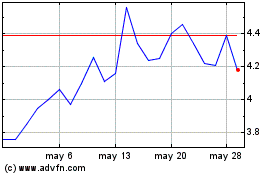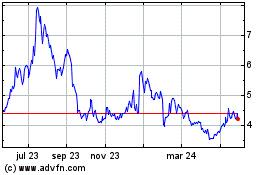Rocket Lab USA, Inc. (Nasdaq: RKLB) (“Rocket Lab” or “the
Company”), a global leader in launch services and space systems,
has completed integration and testing of two spacecraft destined
for Mars orbit.
This press release features multimedia. View
the full release here:
https://www.businesswire.com/news/home/20240729845810/en/
Rocket Lab completes integration and
testing of twin spacecraft for the University of California
Berkeley’s Space Science Laboratory and NASA's ESCAPADE mission at
Rocket Lab's Spacecraft Production Complex and headquarters in Long
Beach, California. (Photo: Rocket Lab)
Rocket Lab built the twin spacecraft for the University of
California Berkeley’s Space Science Laboratory and NASA to enable
the Escape and Plasma Acceleration and Dynamics Explorers
(ESCAPADE) mission, scheduled to launch from Cape Canaveral this
year. This heliophysics mission will measure plasma and magnetic
fields around the Red Planet, helping scientists learn more about
the processes that strip away atoms from Mars’ magnetosphere and
upper atmosphere, driving Martian climate evolution.
Named Blue and Gold, the spacecraft were designed, built,
integrated, and tested at Rocket Lab’s Spacecraft Production
Complex and headquarters in Long Beach, California. Based on Rocket
Lab’s Explorer spacecraft, a configurable, high delta-V
interplanetary platform, the duo features Rocket Lab-built
components and subsystems, including solar panels, star trackers,
propellant tanks, reaction wheels, reaction control systems,
radios, and more.
“Building one Mars spacecraft is an achievement, but building
two and doing it on an accelerated timeline is testament to our
team’s deep experience and our vertical integration strategy,” said
Rocket Lab founder and CEO Sir Peter Beck. “We are immensely proud
to once again partner with NASA and support the UCB team to deliver
new and important science from Mars.”
“Rocket Lab has been an invaluable partner to UC Berkeley over
the last four years of ESCAPADE’s development,” said ESCAPADE
Principal Investigator and Associate Director for Planetary Science
at the UC Berkeley Space Sciences Laboratory, Rob Lillis. “Their
energetic, talented engineers and managers have consistently gone
above and beyond in responding rapidly and constructively to both
our requests and the inevitable challenges inherent in developing
new scientific spacecraft. We are proud to be flying with Rocket
Lab to Mars."
Mars missions can take a decade or more from proposal to launch,
but Rocket Lab was able to produce Blue and Gold in just three and
half years due to mature, proven spacecraft development experience,
as well as a vertically integrated supply chain that enables
streamlined production.
Blue and Gold are scheduled to ship to Cape Canaveral in August
where they will be integrated onto Blue Origin’s New Glenn
rocket.
+ About Rocket Lab
Rocket Lab is a global leader in launch and space systems.
Rocket Lab’s Electron launch vehicle is the second most frequently
launched U.S. rocket annually and has delivered more than 172
satellites to orbit for commercial and Government partners,
including NASA, the U.S. Air Force, DARPA and the NRO. Rocket Lab
also delivers proven suborbital hypersonic launch capability with
its HASTE launch vehicle. Building on the deep heritage of
Electron, Rocket Lab is developing Neutron, an advanced 13-tonne
payload class, reusable launch vehicle tailored for constellation
deployment and interplanetary missions. Rocket Lab is also a
premier supplier of advanced satellites, flight-proven subsystems
and spacecraft components. At a component level, Rocket Lab
spacecraft technology spans space solar power, composite
structures, flight software, star trackers, reaction wheels,
separation systems, and more. Rocket Lab satellite technology and
components have been integrated into more than 1,700 satellite
missions globally. www.rocketlabusa.com.
+ Forward Looking Statements
This press release contains forward-looking statements within
the meaning of the Private Securities Litigation Reform Act of
1995. We intend such forward-looking statements to be covered by
the safe harbor provisions for forward-looking statements contained
in Section 27A of the Securities Act of 1933, as amended (the
“Securities Act”) and Section 21E of the Securities Exchange Act of
1934, as amended (the “Exchange Act”). All statements contained in
this press release other than statements of historical fact,
including, without limitation, statements regarding our launch and
space systems operations, launch schedule and window, safe and
repeatable access to space, Neutron development, operational
expansion and business strategy are forward-looking statements. The
words “believe,” “may,” “will,” “estimate,” “potential,”
“continue,” “anticipate,” “intend,” “expect,” “strategy,” “future,”
“could,” “would,” “project,” “plan,” “target,” and similar
expressions are intended to identify forward-looking statements,
though not all forward-looking statements use these words or
expressions. These statements are neither promises nor guarantees,
but involve known and unknown risks, uncertainties and other
important factors that may cause our actual results, performance or
achievements to be materially different from any future results,
performance or achievements expressed or implied by the
forward-looking statements, including but not limited to the
factors, risks and uncertainties included in our Annual Report on
Form 10-K for the fiscal year ended December 31, 2023, as such
factors may be updated from time to time in our other filings with
the Securities and Exchange Commission (the “SEC”), accessible on
the SEC’s website at www.sec.gov and the Investor Relations section
of our website at www.rocketlabusa.com, which could cause our
actual results to differ materially from those indicated by the
forward-looking statements made in this press release. Any such
forward-looking statements represent management’s estimates as of
the date of this press release. While we may elect to update such
forward-looking statements at some point in the future, we disclaim
any obligation to do so, even if subsequent events cause our views
to change.
+ About the ESCAPADE Mission
NASA’s ESCAPADE is a NASA heliophysics mission will study Mars’
magnetosphere – the magnetized area of space around the planet –
using two identical small spacecraft, which will provide
simultaneous two-point observations. The spacecraft will help
provide researchers a better understanding of how the magnetosphere
interacts with the solar wind, and how energy and plasma enter and
leave the magnetosphere. ESCAPADE is part of the NASA Small
Innovative Missions for Planetary Exploration program. The mission
is managed by the University of California Berkeley’s Space
Sciences Laboratory, with key partners Rocket Lab, NASA Goddard
Space Flight Center, Embry Riddle Aeronautical University, Advanced
Space LLC and Blue Origin.
View source
version on businesswire.com: https://www.businesswire.com/news/home/20240729845810/en/
+ Rocket Lab Media Lindsay McLaurin
media@rocketlabusa.com
Rocket Lab USA (NASDAQ:RKLB)
Gráfica de Acción Histórica
De Jun 2024 a Jul 2024

Rocket Lab USA (NASDAQ:RKLB)
Gráfica de Acción Histórica
De Jul 2023 a Jul 2024
